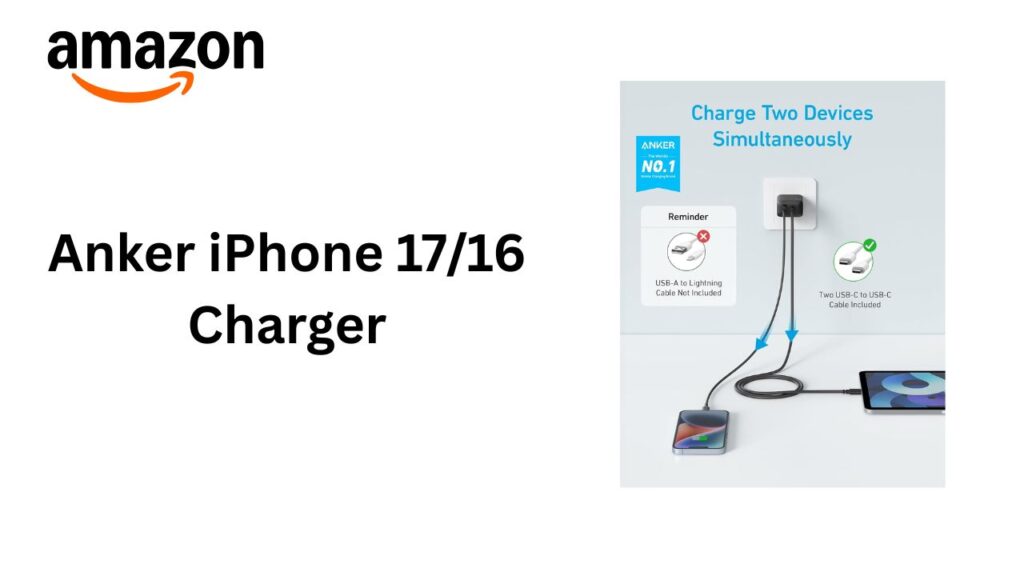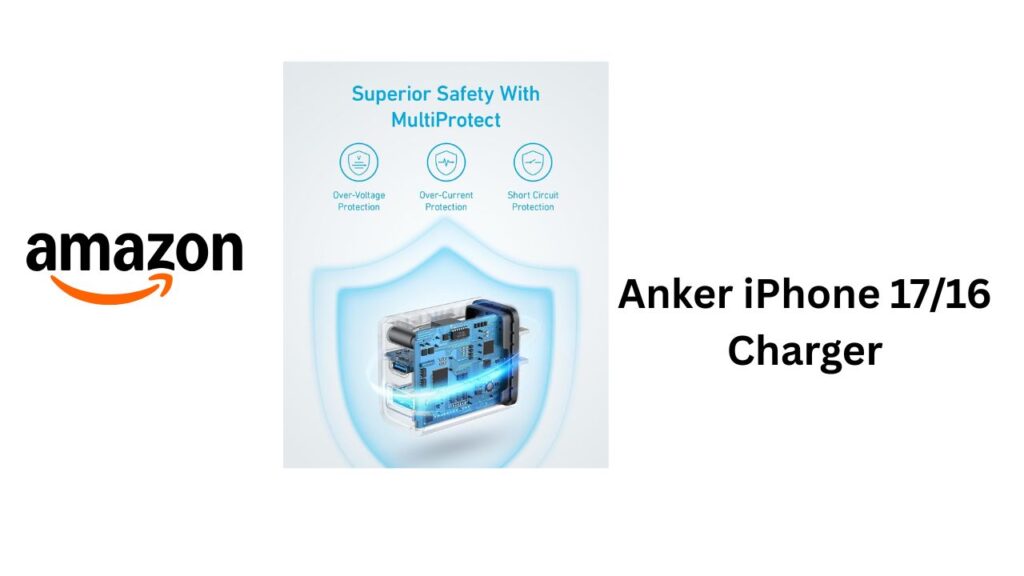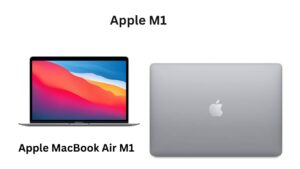Introduction
The market for smartphone chargers is crowded, but Anker has long been a standout brand for reliable charging accessories. With the release of the iPhone 17 and iPhone 16, many users seek chargers that deliver fast, safe, and convenient power to their devices.
This review examines Anker chargers designed for the iPhone 17/16 — focusing on build quality, charging performance, compatibility, safety, design, and value. The goal is to provide a comprehensive, informative assessment that helps readers decide whether an Anker charger is the right choice for their new iPhone.

Product Overview
Anker offers several charger models compatible with the iPhone 17 and iPhone 16 series, including compact USB-C wall chargers with Power Delivery (PD), multi-port chargers, and MagSafe-compatible wireless chargers. Key features across these models typically include:
- USB Power Delivery (USB-PD) support for fast wired charging
- GaN (gallium nitride) technology in many newer chargers for higher efficiency and smaller size
- Over-current, over-voltage, and short-circuit protections
- Compatibility with Apple’s fast charging specifications
- Optional bundled cables or MagSafe magnetic alignment for wireless units
This review concentrates primarily on Anker’s wired USB-C PD wall chargers (commonly used with the supplied USB-C to Lightning cable for iPhones) and the MagSafe-style wireless chargers intended for iPhone 12 and later, including iPhone 16/17.
Design and Build Quality

- Materials and Finish: Anker chargers generally use high-quality polycarbonate or similar materials that feel sturdy and resist yellowing over time. The finishes range from matte to slightly glossy, with minimal branding and a utilitarian aesthetic.
- Size and Portability: With the adoption of GaN technology, Anker’s newer chargers are notably compact given their power output. A 30–40W single-port USB-C PD charger is often comparable in size to older 18–20W silicon-based models, making it more travel-friendly.
- Port Configuration: Options include single USB-C ports, dual USB-C ports, and combinations with USB-A (less common in the latest models). Port placement is practical, allowing easy cable routing without crowding.
- Cable Quality: When bundled, Anker cables (USB-C to Lightning or USB-C to USB-C) are typically robust with reinforced connectors. Many users prefer to buy Anker’s braided cable variants for extra durability.
Compatibility and Charging Performance
- iPhone 16/17 Wired Charging: Apple’s iPhone 16/17 supports USB Power Delivery fast charging. Anker USB-C PD chargers (18W and above) will charge these iPhones to around 50% in approximately 25–30 minutes under ideal conditions — comparable to Apple’s own chargers. Higher-wattage Anker chargers (e.g., 30W, 45W) can also charge iPhones at the same safe charging rate; the iPhone will draw only what it needs.
- GaN Advantages: GaN chargers offer better thermal performance and efficiency, which can translate to slightly faster charging under some conditions and a much smaller physical footprint.
- Multi-Port Behavior: In multi-port scenarios, total power is shared across ports. Anker provides clear power distribution specs (e.g., 65W total, with 45W on USB-C1 when used alone, etc.). If you plan to charge multiple devices simultaneously, check those distribution details to set expectations.
- Wireless (MagSafe-like) Charging: Anker’s MagSafe-compatible wireless chargers typically provide up to 15W (the theoretical maximum varies by model and iPhone generation). Magnetic alignment helps maintain optimal coil alignment for efficient wireless charging. In practice, wireless charging is slower than wired PD fast charging and generates more heat, which can reduce charging speed if the phone throttles to manage temperature.

Safety and Reliability
- Certifications and Protections: Anker chargers routinely include built-in protections such as over-voltage protection (OVP), over-current protection (OCP), short-circuit protection (SCP), and temperature control. Many models are certified by safety organizations like UL or ETL where applicable.
- Smart Charging ICs: Anker integrates intelligent charging controllers that manage voltage/current delivery based on the connected device’s needs, minimizing the risk of battery degradation due to incorrect power profiles.
- Long-Term Reliability: User reports and warranty coverage (Anker often offers an 18–24 month limited warranty on many products) indicate above-average longevity. Anker’s customer support is generally well-regarded for handling warranty claims and troubleshooting.
Real-World Use Cases
- Daily Home/Office Charging: For most users, a 30W Anker USB-C PD charger is an excellent balance between speed and size. It charges an iPhone 16/17 rapidly while remaining compact for a desk or bedside table.
- Travel: GaN-powered Anker chargers are ideal for travel — they take up little space and can often charge both a laptop (lower-wattage models depending) and an iPhone when multiple ports are present.
- Multi-Device Households: A 65W or 100W Anker multi-port charger makes sense if you want one charger for a laptop, tablet, and phone. Be mindful of power sharing and charge profiles.
- Wireless Convenience: Anker’s MagSafe-compatible options are convenient for short top-ups and overnight charging with easy alignment. For fastest charging, wired PD remains superior.
Pros and Cons
- Pros
- Reliable, consistent charging performance
- Broad compatibility with iPhone 16/17 fast charging standards
- Compact GaN designs for high wattage in small packages
- Strong safety features and certifications
- Good value relative to OEM Apple chargers
- Durable cables when included or purchased separately
- Cons
- Charging speeds are ultimately capped by the iPhone’s own charging logic — higher-wattage chargers don’t necessarily make iPhones charge faster beyond the device’s limit
- Wireless MagSafe charging is slower and generates more heat than wired PD charging
- Some multi-port models require careful reading of power distribution specs to avoid underwhelming combined output
- Higher-end models can still be relatively pricey compared with budget alternatives
Comparison with Apple’s Chargers
- Performance: Anker USB-C PD chargers match Apple’s chargers in fast charging capability for iPhone 16/17 when the wattage is appropriate (18W+). In many cases, Anker offers higher wattage and additional ports at similar or lower prices.
- Design: Apple’s chargers are minimalist and integrated into the Apple ecosystem aesthetic. Anker tends toward a more utilitarian look with a stronger emphasis on size-to-output efficiency (thanks to GaN).
- Price and Value: Anker generally provides better value, especially for multi-port or higher-wattage models. Apple’s chargers may be preferred by users seeking official Apple-branded accessories and specific aesthetic matching.
Environmental and Practical Considerations
- Energy Efficiency: GaN chargers are generally more energy-efficient, producing less waste heat and reducing standby power loss. This can be a small but meaningful advantage over many older silicon-based chargers.
- Longevity and Waste Reduction: Buying a quality Anker charger that can handle multiple devices and multiple generations of phones reduces the need to buy replacements, which in turn decreases electronic waste.
- Cable Ecosystem: Using a high-quality USB-C to Lightning cable is important for safety and speed. Consider Anker’s certified cables (MFi-certified Lightning cables) to ensure compatibility and longevity.
Recommendations
- For most iPhone 16/17 users: A 30W Anker USB-C PD charger is an excellent all-around choice. It balances fast charging, compact size, and value.
- For users who also charge laptops: Consider a 65W or 45W multi-port GaN charger, but verify power distribution if you plan to charge multiple devices simultaneously.
- For bedside wireless convenience: Anker’s MagSafe-compatible charger or magnetic wireless stand is useful for overnight charging and one-handed placement, but expect slower charging than wired PD.
- For travel: Choose a GaN single or dual-port charger to minimize bulk while maintaining strong charging capability.
Buying Tips
- Confirm the wattage and number of ports meet your needs. Don’t assume higher total wattage equates to faster phone charging if the device caps input.
- Check whether a cable is included. If not, budget for an MFi-certified USB-C to Lightning cable.
- Review power distribution specs for multi-port units to ensure they deliver adequate power when multiple devices are connected.
- Consider GaN models for superior size-to-power ratios and better thermal performance.
- Look for warranty coverage and user reviews to assess real-world reliability.
Conclusion
Anker’s chargers offer a compelling mixture of performance, safety, and value for iPhone 16 and iPhone 17 users. Whether you want a compact GaN wall charger for daily use, a multi-port hub to charge multiple devices, or a MagSafe-style wireless pad for bedside convenience, Anker provides options that meet Apple fast-charging standards without the premium price tag of OEM accessories. For most consumers, an appropriately spec’d Anker charger is a smart purchase: fast, reliable, and built to last.
Amazon Echo Frames: Hands-free Smart Glasses for Everyday Use




